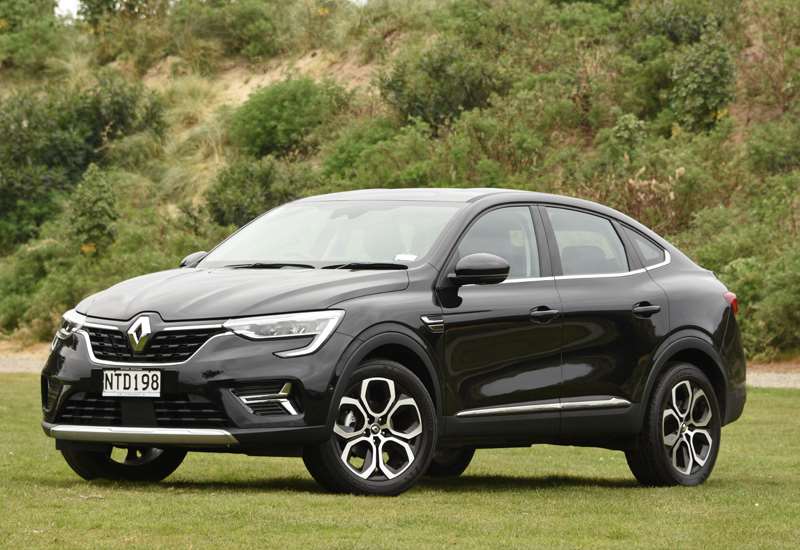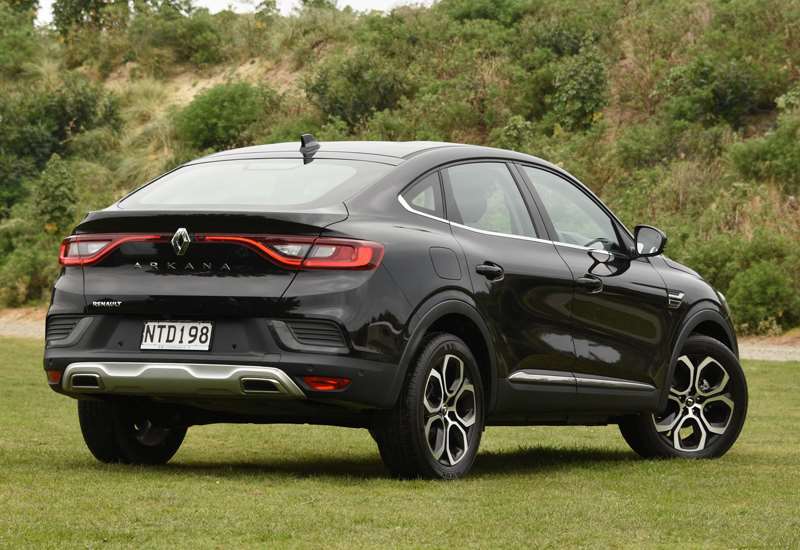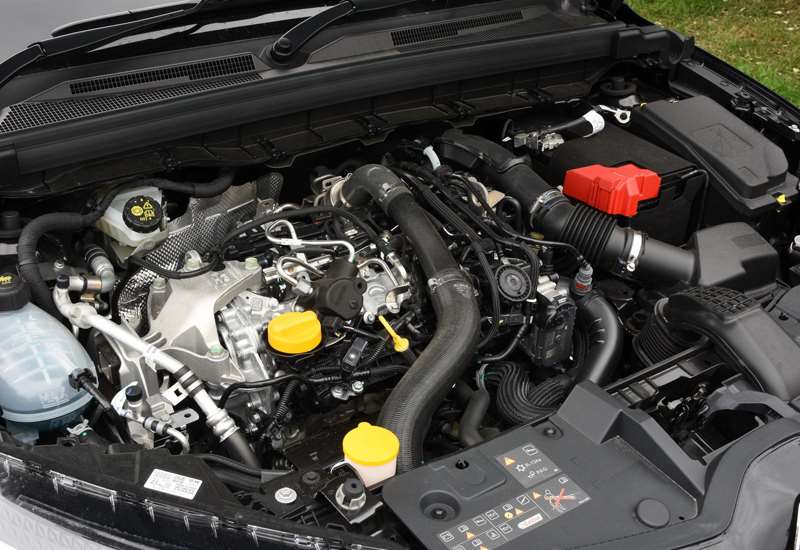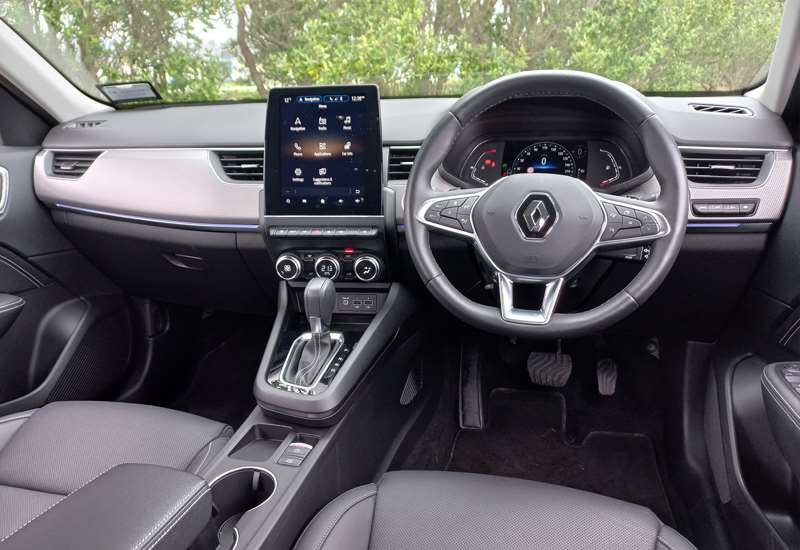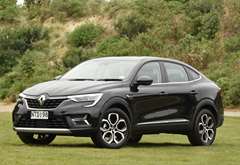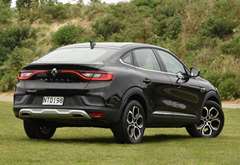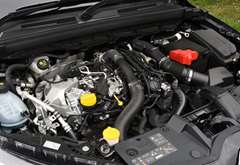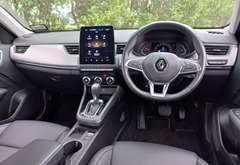The Renault Arkana adds further choice in the compact crossover coupe segment. David Thomson takes a look.
What’s new?
Crossover SUVs with swooping coupe lines have become all the rage in recent years, and now Renault has added a fresh offering into the mix with the new Arkana.
Using the same underlying platform as the Nissan Juke, and built in South Korea, the Arkana is not quite as French as its nameplate might suggest. That said, there is more than a touch of Gallic flair (and some quirkiness) about the vehicle, which derives its name from the Latin world arcanum, meaning secret.
Size-wise, the Arkana slots into Renault’s SUV line up between the Captur and Koleos and is likely rival to vehicles such at the Toyota C-HR, Citroen C4 and Mazda CX-30.
There’s potential for a hybrid to join the mix at some point, but for now the New Zealand range is full petrol-powered, with all three variants featuring a 1.3-litre turbo engine, driving the front wheels via a seven-speed dual-clutch automatic transmission.
While small in capacity, the engine produces plenty of punch for its size, with peak outputs of 115kW and 262Nm being quite similar to those achieved by the non-turbo 2.0 and 2.5-litre engines that power some of its rivals.
The Kiwi line-up opens with the $39,990 Zen variant, while the flagship is the $49,990 R.S. Line. An example of the mid-spec $44,990 Intens version was supplied by Renault NZ for this appraisal.
What comes as standard?
Active safety aids across the range include adaptive cruise control with stop and go, lane-keep assist, lane-departure warning, autonomous emergency braking with pedestrian and cyclist detection, blind-spot monitoring, traffic-sign recognition and Easy Park Assist.
Even at entry level, the Arkana provides keyless entry and start, along with 17-inch alloys, LED headlights and front, side and rear parking sensors, climate control, artificial leather trim, a heated steering wheel, and a 7.0-inch touchscreen with smartphone mirroring.
The Intens, as tested, sits on 18-inch alloys, and takes a rear cross-traffic alert, the larger 9.3-inch central touchscreen with satellite navigation, the fully digital main instrument cluster, upgraded upholstery, and power-operated front seats with heating and ventilation.
Opt for the R.S. and you get crisper exterior detailing and special upholstery with red contrast stitching, red-striped seat belts, wireless smartphone charging, a sunroof, carbon-effect trim accents, and alloy pedals.
What’s it look like?
When BMW started the ball rolling with its X6 back in 2008, few would have predicted that SUVs styled with swooping coupe-like lines would be an enduring thing. But here we are 14 years later, and these less practical but more stylish crossover machines are all the rage.
With some visual similarities to BMW’s similar-sized X4, but a price tag tens-of-thousands less, the Arkana certainly makes a strong initial impression.
The current Renault family look is not only showcased by the nose and the prominent chromed diamond badge that cuts into the bonnet line, but also in the swooping lines of the grille which echo those of other models from the French company, and the light clusters with their distinctive claw-like lower protrusions.
The Arkana rides tall with 199mm of ground clearance but setting that feature aside, its actual styling lines blend features of a conventional coupe and hatchback. Its looks are definitely a talking point, and unlikely to leave anyone with even a passing interest in cars disinterested. For my money, the test car looked great from front and side angles, but a trifle fussy at the rear.
For those that like a little more dress-up, the flagship R.S. provides some additional exterior bling.
What’s it like inside?
Counterintuitively perhaps, while the Arkana looks a lot bolder from the outside than its slightly smaller sibling, the Captur, it is more conservatively styled within.
One obvious similarity is the dashboard, which looks like an identical moulding, and on the Intens and R.S. features the same prominent portrait-format 9.3 inch centre touchscreen set up. Beneath this, though, the Arkana opts for a conventional-looking gear shift and a standard rather than floating centre console arrangement. There’s a fully digital main instrument cluster too, and light-coloured upper trims to contrast with predominantly darker finishing below the window line.
The trims themselves are an odd mix of premium feel, for example, the leather-and-suede seat upholstery, and cheaper hard plastics including, though it looks metallic, extensive mesh-like garnishing. Inlaid ambient lighting is a nice touch.
There’s no shortage of interior practicality, whether it be the decent in-cabin storage (including large door bins, and decent cupholders), or the dual USB-provision cubby in front of the gear lever. Full marks too for the crisp, clear definition of the touchscreen, and the seamless phone integration, which includes Apple CarPlay and Android Auto integration.
Being of French design, the Arkana offers some interior quirkiness, including that long-standing Renault signature of a credit card-style key. The key gets its own storage tray even though this smart feature is superfluous as the vehicle comes with full proximity locking and push button start and thus the key can simply be left in your pocket or carry-bag. An ongoing reliance on a separate control stalk for key audio operation is frustrating though as the stalk is awkwardly located behind the steering wheel.
The cabin is roomy and comfortable up front.
The back seat is well provisioned with its own adjustable air vents, dual USB plug points, and a fold-down centre armrest with integrated cupholders. Rear legroom is good, but as well as the plunging roofline impacting on rear headroom, cabin width will be a constraining factor in any attempt to carry three adults in the back.
Load capacity is also impacted by the coupe styling, though this is mitigated by provisioning a space-saver spare wheel. Standard boot capacity is 485-litres which lifts to 1268 litres when the rear seats are folded down.
A final practical niggle is that there’s no rear wiper and in my view the size and angling of the tailgate glass warrants the inclusion of this feature.
What’s it like to drive?
Despite its diminutive cubic capacity, the Arkana’s 1.3-litre engine delivers plenty of performance zest, most notably when the Sports drive mode is engaged.
Power delivery from the test car was smooth and progressive during open road driving, though not nearly so impressive around town: setting off from rest, a jerky throttle response was the norm, with initial hesitation followed by a disconcerting ‘‘bang’’ as power delivery suddenly manifested itself; the transmission also tended to hunt between gears at light throttle loadings. This quirk was apparent in all three drive modes (Eco, Sport and the customisable MySense setting), which alters throttle response, steering weight, and the digital display.
The steering is light, even with the maximum-heft sports setting selected. Steering feel is also quite limited, though the linear action and precision of the steering is very good.
Handling is entirely decent, with the test car exhibiting tenacious front-end grip and reasonable balance when pressed through twists and turns. Ride quality is fine on the main highway haul, but potholes and other major surface imperfections generate considerable suspension thump.
Noise levels are very well contained both around town and on the highway cruise.
With 199mm of ground clearance, the Arkana ticks that essential credential for soft-road adventuring. It is, however, a front drive not a four-wheel-drive machine, and so any venturing off formed roads will require prudence, and most likely occur in dry conditions. On the other hand, the decent ground clearance comes in handy when negotiating the more savage of the many speed humps that have spawned in plague proportions on Dunedin roads in recent years.
Verdict
Visually arresting but dynamically patchy, the Renault Arkana is an interesting but not entirely compelling addition to Renault’s New Zealand range.
- David Thomson
